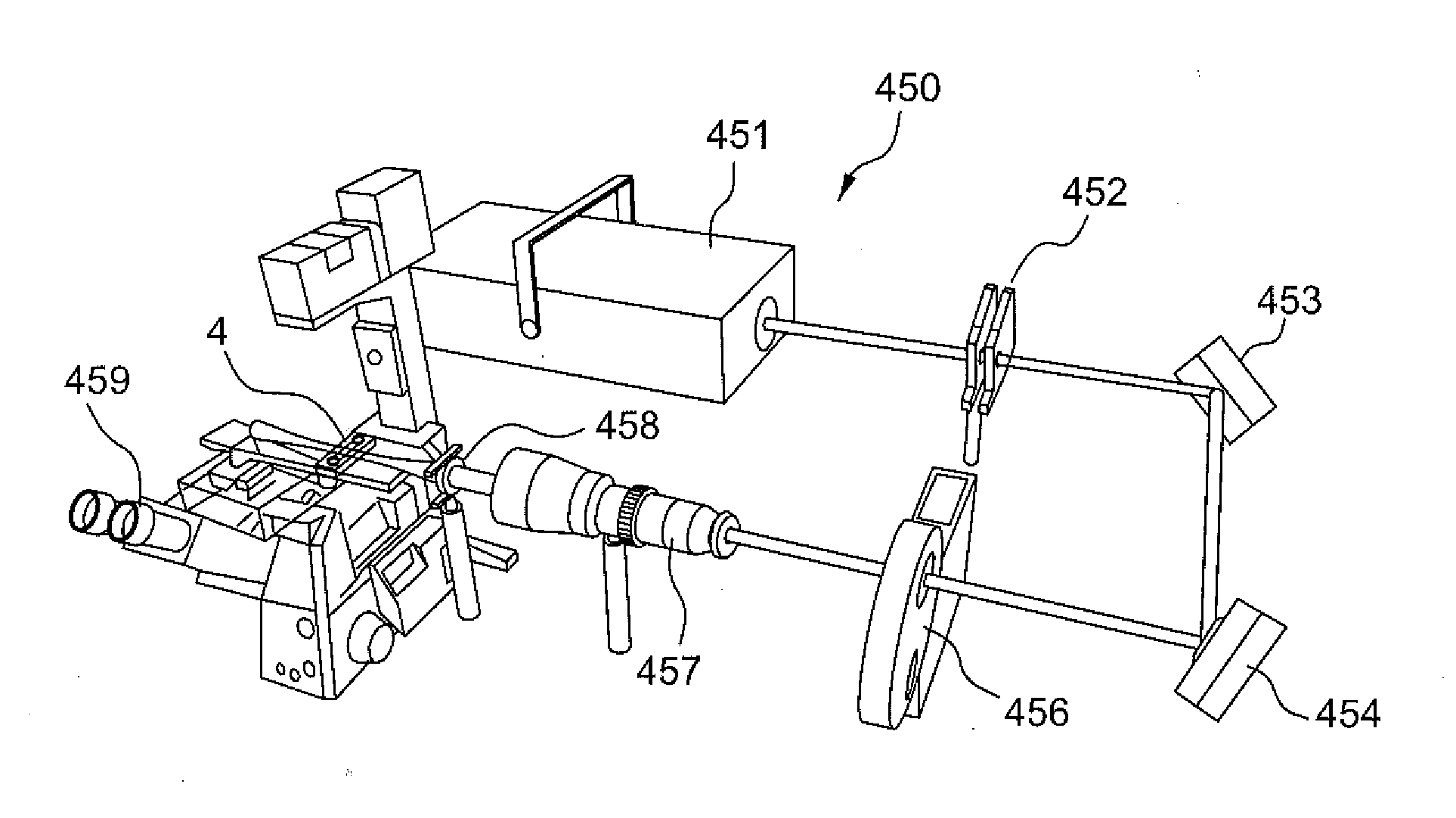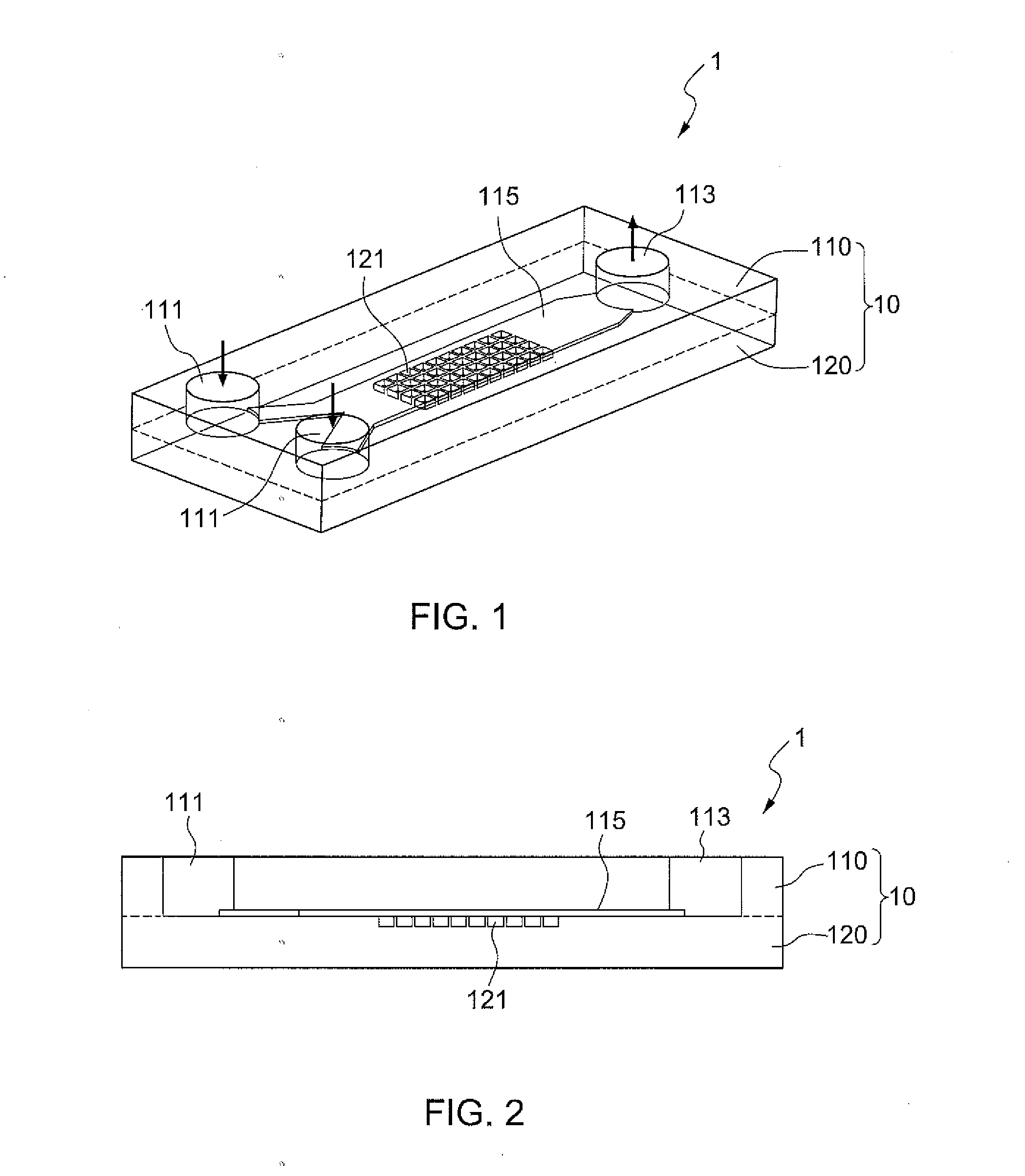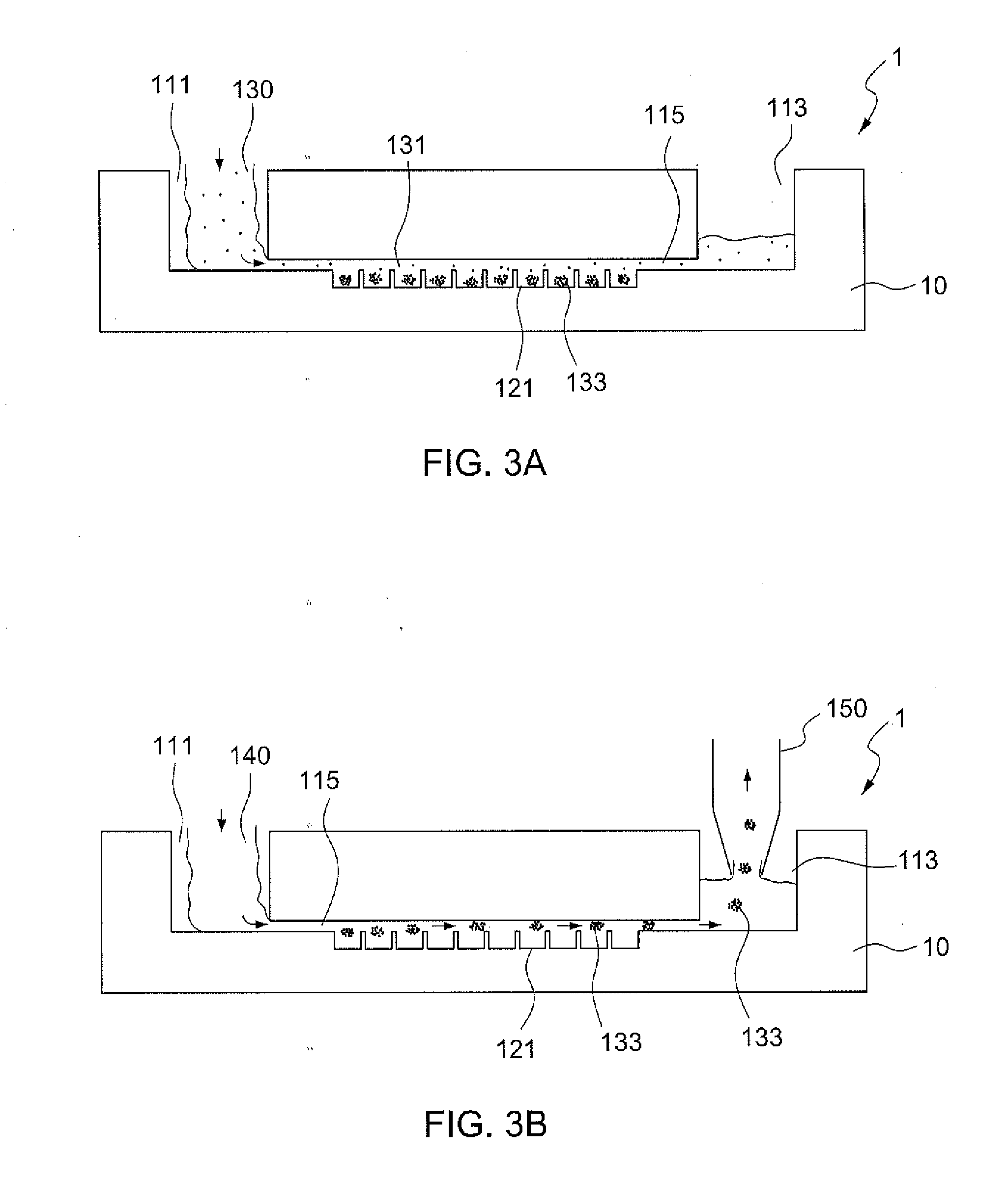Microfluidic device for cell spheroid culture and analysis
a microfluidic device and cell spheroid technology, applied in the field of microfluidic devices, can solve the problems of spheroids of various sizes not being able to provide reliable information for drug testing, affecting the practical use of spheroid culture, and affecting the practicality of us
- Summary
- Abstract
- Description
- Claims
- Application Information
AI Technical Summary
Benefits of technology
Problems solved by technology
Method used
Image
Examples
first embodiment
[0027]FIG. 1 illustrates a microfluidic device 1 according to the present disclosure, which is used for cell spheroid formation. The microfluidic device 1 substantially comprises a main body 10, a fluid channel 115 horizontally extending inside the main body 10; the fluid channel 115 has at least one inlet and outlet, and in this embodiment, it has two inlets 111 and an outlet 113, both of which are open to the outside. A plurality of chambers 121 for culturing cell spheroids are formed underneath and open to the fluid channel 115. The fluid channel 115 diverges into two smaller channels which communicate to the outside through each of the two inlets 111, respectively. In this embodiment, the two inlets 111 and the outlet 113 are open to the top surface of the main body 10. The chambers 121 are preferably arranged in a matrix array.
[0028]As shown in FIG. 2, the main body 10 is in a cuboid shape and preferably constructed using two polydimethylsiloxane (PDMS) layers: a top layer 110 ...
third embodiment
[0034]FIG. 5A illustrates a microfluidic device 3 according to the present disclosure. The microfluidic device 3 has a main body 30; a fluid channel 315 horizontally extends inside the main body 30 and has an inlet 311 and an outlet 313 both open to the outside; a plurality of chambers 321 for culturing cell spheroids are formed underneath and open to the fluid channel 315. The main body 10 is in a cuboid shape and is made of PDMS. The path of the fluid channel 315 is formed as one or several U-turns. In addition, the chambers 321 underneath the fluid channel 315 are preferrably arranged in one or several matrix arrays (see FIG. 5B). The U-turn arrangement of the path of the fluid channel 315 provides a rather large space underneath the channel 315 for forming chambers 321 for culturing cell spheroids; the flow rate of the culture medium 140 for flushing the cultured cell spheroids can be maintained relatively high because of the relatively small cross section of the flow path throu...
fourth embodiment
[0035]FIG. 6A illustrates a microfluidic device 4 according to the present disclosure, which is used for not only culturing cell spheroids but also for observing the cultured samples using the selective plane illumination microscopy (SPIM). SPIM is an optically sectioning microscopy technique for imaging large fluorescence samples. In SPIM, the sample is illuminated with a sheet of light that propagates perpendicularly to the direction of observation. Therefore, a fluorescence image of a finite depth, called a sectioned image, can be formed without lateral scanning. A stack of sectioned images acquired while the sample is moved along the direction of observation can be used to form a three dimensional (3D) view of a sample, such as a cellular spheroid. The spatial resolution of SPIM can be further improved by using proper image deconvolution methods, such that a single cell can be identified in a sample of a diameter larger than 100 μm. With these unique features, SPIM is especially...
PUM
 Login to View More
Login to View More Abstract
Description
Claims
Application Information
 Login to View More
Login to View More - R&D
- Intellectual Property
- Life Sciences
- Materials
- Tech Scout
- Unparalleled Data Quality
- Higher Quality Content
- 60% Fewer Hallucinations
Browse by: Latest US Patents, China's latest patents, Technical Efficacy Thesaurus, Application Domain, Technology Topic, Popular Technical Reports.
© 2025 PatSnap. All rights reserved.Legal|Privacy policy|Modern Slavery Act Transparency Statement|Sitemap|About US| Contact US: help@patsnap.com



